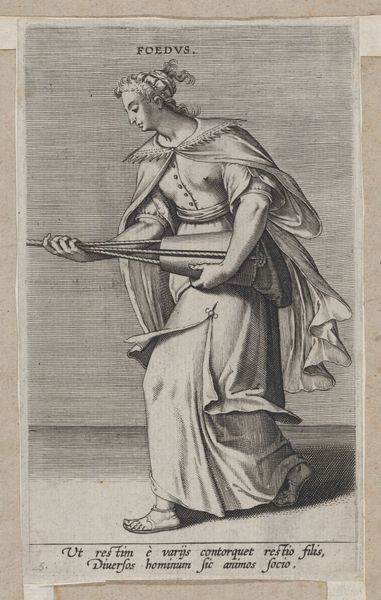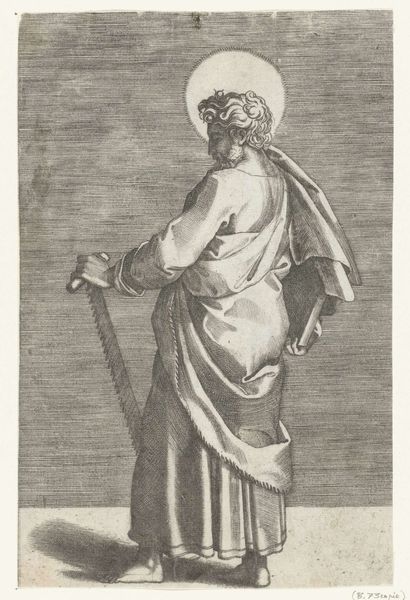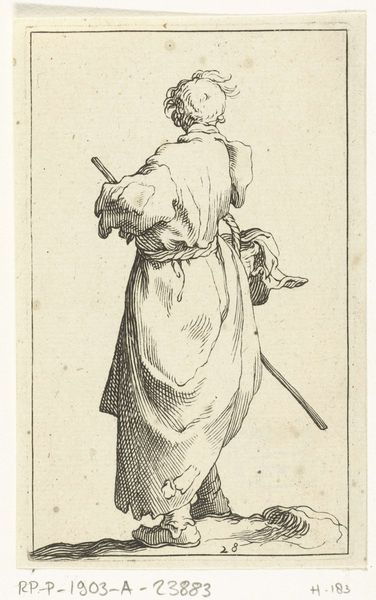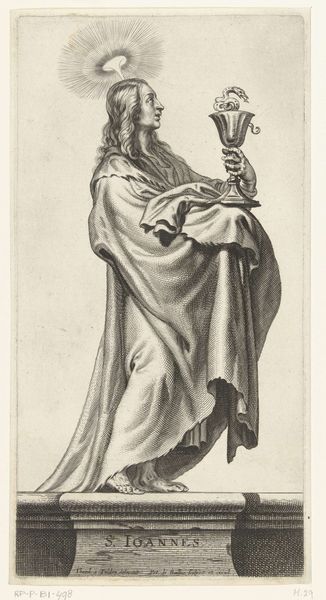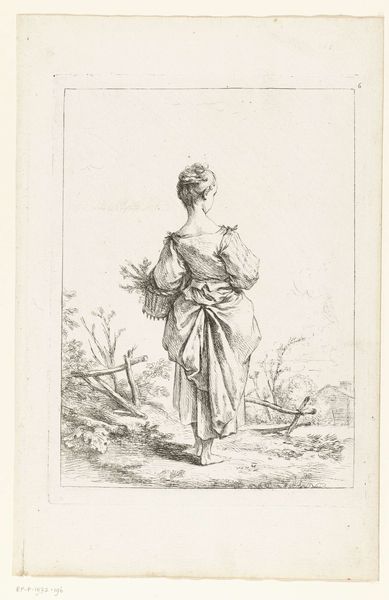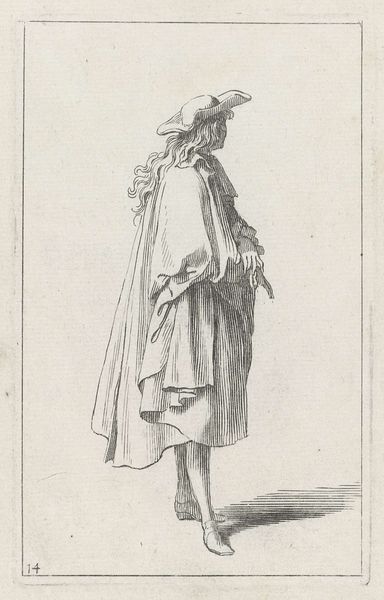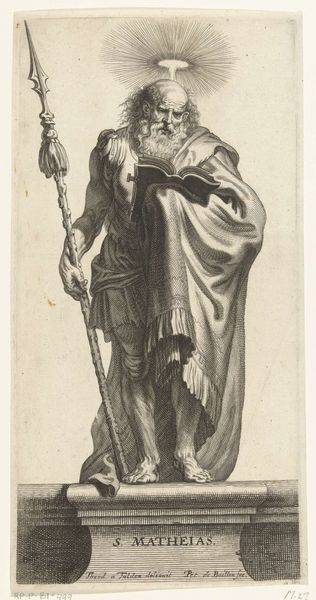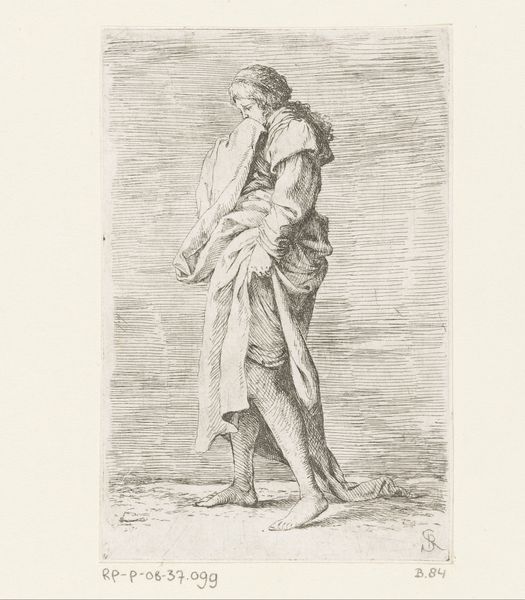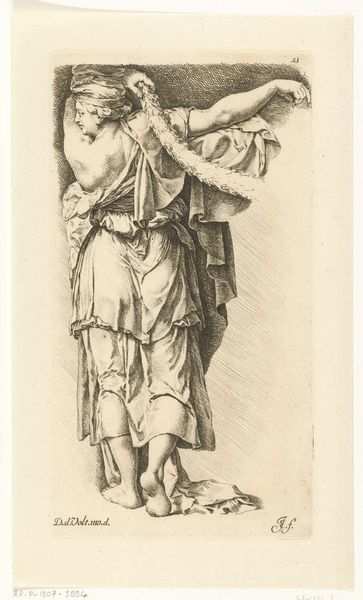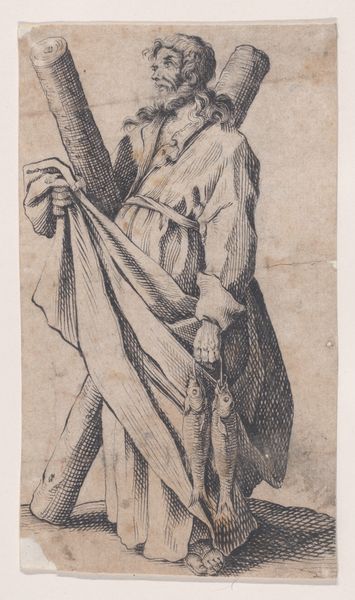
engraving
#
baroque
#
pen illustration
#
old engraving style
#
figuration
#
line
#
history-painting
#
engraving
Dimensions: height 292 mm, width 173 mm
Copyright: Rijks Museum: Open Domain
Editor: This is Jacques Bellange’s “Apostel Jakobus Major,” an engraving from the early 17th century. It's just a lone figure with his back turned, but somehow feels so monumental. What do you see in this piece? Curator: I see an artwork deeply embedded in the Counter-Reformation's visual rhetoric. Consider the timing: the early 1600s were a period of intense religious and political conflict. This depiction of Saint James, seemingly vulnerable from the back, challenges traditional heroic portrayals. How does it make you reflect on power and faith? Editor: That’s a side of the work I didn’t even consider! I guess I was just focused on the textures created with the engraving. Power and faith... So you think the artist is intentionally trying to show vulnerability to critique power? Curator: Exactly. The choice to show his back turned is crucial. Instead of confronting the viewer, a common Baroque strategy to inspire awe and obedience, Bellange offers us a view of pilgrimage, perhaps exile. Think of the social upheavals of the time—religious persecution, wars. Does the work now start speaking of the displaced, the marginalized? Editor: Absolutely! And now that I consider the details of his garb and his walking stick, they no longer feel generic and monumental, they reflect his own agency. This idea completely changes how I perceive it. It's not just about a saint; it's about human experience during that historical moment. Curator: Precisely! By looking at these details through a critical lens we find this artwork is actively engaging in a complex dialogue about authority, identity, and the experiences of ordinary individuals during this complex historical era. Editor: Wow, I definitely have a richer understanding of this engraving now, and new ideas of what it communicates. Thank you.
Comments
No comments
Be the first to comment and join the conversation on the ultimate creative platform.
